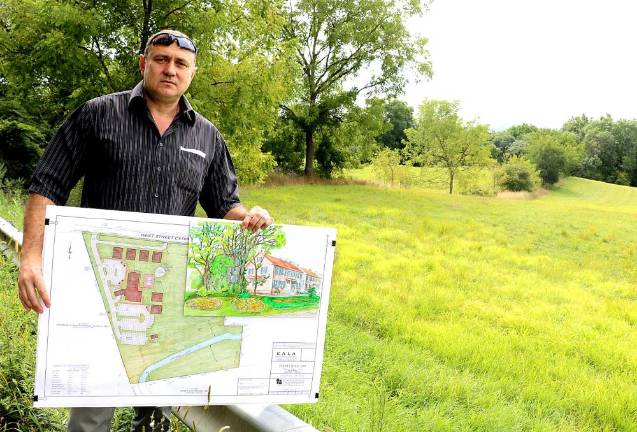Environmentalist Jay Westerveld at odds with opponents of Pulpit Rock development
Warwick. Findings are site was environmentally and historically acceptable.

Four years ago Warwick resident, business owner and developer Stephen Kitar purchased the property, just shy of 10 acres, along West Street identified by the prominent formation known as “Pulpit Rock.”
He plans to build what he has named, “Pulpit Rock Inn,” a project to build six cottage-type units and a central inn type accommodation, which also includes preserving Pulpit Rock as part of its design.
To help clear the path for his development Kitar contracted for historic, archeological, environmental and traffic studies, all of which, he said, found no impediments to its development.
But the project is not without controversy.
Opponents, spearheaded by the Greenbelt Preservation Society and others argue that Pulpit Rock is environmentally sensitive and possibly an historic Native American religious site.
Enter Jay Westerveld, Warwick resident, environmentalist and researcher of habitats.
“The first I’d heard of the Pulpit Rock issue,” he said, “was after several citizens asked for my help with its preservation.”
Westerveld seemed like a good choice for the opposition since he had coined the term “Greenwash,” conveying a false impression or providing misleading environmental information in a 1986 essay examining practices of the hotel industry and had assisted ecological preservation efforts in New York. He also opposed construction on the nearby Glenmere mansion project.
But his findings at Pulpit Rock were that the site was environmentally and historically acceptable. (Jay Westerveld’s letter to the editor appears on Page 13.)
“Since informing them that the site holds neither ecological nor human cultural value,” he said, “I have become the subject of irrationally intense and incessant attack by this wildly vocal minority of residents. I am learning that the very people who oppose Mr. Kitar’s Pulpit rock project are hysterical social media.”
Environmental studies are part of the Environmental Impact Statement (EIS) preparation along with in-depth historical, archeological, engineering, economic, traffic and other studies that are currently in process, some completed and others being prepared.
All must be reviewed by the Planning Board and results will be available to the public.
“We have a team of highly qualified professionals working diligently to address every aspect of the project, “ said Kitar, “and every concern voiced by the public during public meetings are addressed.”
- Roger Gavan